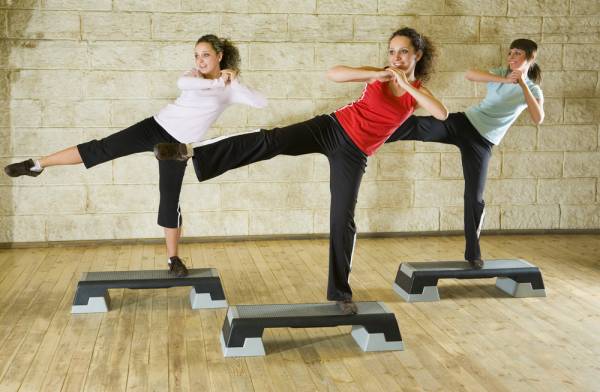Human beings are generally driven by one of two motivating forces: fear or love. Companies act out of scarcity (fear) or abundance (love). Relationships can be possessive and distrusting (fear) or understanding and supportive (love).
When it comes to our lives in fitness, motive also matters and come down to either fear or love. Here’s how to distinguish the two in your approach to fitness.
Fear-Based Fitness
Exercising Only for Weight Loss
It’s a shame fitness is even correlated with weight loss. There are heavy fit people and lean people who never exercise at all. But there aren’t heavy people who don’t have an issue relating to food and how it’s consumed. Being overweight is about food, not fitness.
Airplanes, automobiles, radios, computers, and televisions did not significantly contribute to weight gain from 1900 to 1980. The trend of obesity and weight gain en masse is a result of the changes to our food supply that began in the late 1970s.
Shows like The Biggest Loser give people the wrong message – if you’re fat, you need to exercise more. The right message is that you need to start loving yourself and address why you’re compulsively eating, overeating, or addicted to unhealthy food.
“Human beings run from their problems in many ways – booze, food, and shopping come to mind. You can run also from your problems by literally running, as I can well attest to.”
Using fear as a motivator, by forcing yourself to exercise to lose weight, is a road to nowhere. Exercise because you like it or it helps you use your body more efficiently and effectively.
RELATED: The Fitness Existentialist – It Starts With You
Gimmicky Fitness
Fitness programs that sound too good to be true are exactly that. If you exercise like you diet (you hop from one program to the next), then you are motivated by fear.
Exercise fads are like the latest diet – here today and gone tomorrow. Many such programs “work” in the sense they can take you from point A to point B in a relatively short time. But unless you plan to stick to the gimmick, you’re right back to square one once the fad wears off.
“For your purpose in fitness, find a sport or activity you love, and you’ll be more likely to stay the course.”
It’s almost comical that we still look to exercise fads and celebrity diets as concrete answers to problems that require introspective work and long-term solutions. But it’s no laughing matter. It’s big business. There are plenty of fast-talking people in the fitness industry who are more than happy to tell you that fitness can be easy and produce both quick and lasting results. From a fear standpoint, we love to hear that it’s going to be easy. But nothing worth doing in life is fast or easy. Nothing.

Over-Exercising
Human beings run from their problems in many ways – booze, food, and shopping come to mind. You can run also from your problems by literally running, as I can well attest to.
But there’s no such thing as a healthy addiction, exercise included. If your body is breaking down from overtraining or your life around you is deteriorating because of too many reps at the gym or miles logged on the road, then you are exercising out of fear.
SOUND FAMILIAR? How to Coach the Newbie Who Won’t Slow Down
Even at a six-minute mile pace, you cannot outrun your shadow. Instead of acting out of fear and running from problems, do yourself a favor and get to know yourself.
Love-Based Fitness
Functional Fitness
It’s no accident the number one fitness trend for 2015, according to ACSM, is functional fitness. Year after year functional fitness pops up on the list, while trends like Zumba come and go.
The reason functional fitness is consistently on the list is simple. Fitness is about moving your body in the way it was meant to be moved. Functional fitness means getting back in touch with how the human body is designed to move – in a dynamic, multi-plane, manner.
“Exercise because you like it or it helps you use your body more efficiently and effectively.”
Running in a straight line to burn calories is not functional, whereas running trails or drills on an agility ladder are. The distinction is that our body, like our mind, yearns to evolve and grow. Growth comes about through dynamic change.
In life, we change directions, meet obstacles, and must overcome them. Functional fitness, both literally and metaphorically, forces us to do that, too – to find ways to move our body with grace and precision through life’s various obstacles.
RELATED: The Definition of Functional Strength
Sport as Fitness and Fitness as Sport
As television character Kenny Powers hilariously pointed out, sport and fitness are not the same. Powers, a fictitious former baseball player, stated he was a “professional athlete,” not a “professional exerciser.” Despite that assertion, any professional athlete knows that reps in the weight room are an essential part of training, just like reps on the field of play.

Sport and fitness can and should be one and the same in terms of working toward a purpose. This is what makes CrossFit so effective – it takes functional fitness and makes it into a sport. The key is to find your own sport or activity and make exercise a core component of your proficiency. If you love the martial arts, you will kick higher, faster, and more effectively if you’re also working on your fitness.
RELATED: Why Do We Train? Finding Purpose In Movement
The same goes with any sport. Not that many years ago, you’d have been hard pressed to find a professional golfer in tip-top shape. Now, the deconditioned PGA golfer is the exception. For your purpose in fitness, find a sport or activity you love, and you’ll be more likely to stay the course.
Purpose-Based Fitness
We are all here for a purpose. For some it’s our life’s work, while for others it’s faith or family. Tapping in to your anchor will lead you in the right direction when it comes to fitness. If your purpose is your family, then your motivation becomes that a fit and healthy parent is a more productive parent and better role model.
Taking time to exercise doesn’t have to take time away from your family or be considered selfish (that’s going back to fear-based thinking). Purpose-driven fitness allows for inclusive family activities. For instance, family hikes, ski vacations, or even team races are wonderful examples of purpose-based activities.
“If your body is breaking down from overtraining or your life around you is deteriorating because of too many reps at the gym or miles logged on the road, then you are exercising out of fear.”
If your purpose is your work as an artist, corporate executive, or athlete, then fitness can help you grow with your craft in many ways – gaining mental clarity, taking fewer sick days, or becoming a more finely tuned instrument to perform your job.

This holiday season, give the gift of fitness to yourself – treat yourself with love and kindness. To find your purpose and true motivation in fitness, start with something you love and go from there.
Photos courtesy of Shutterstock.






